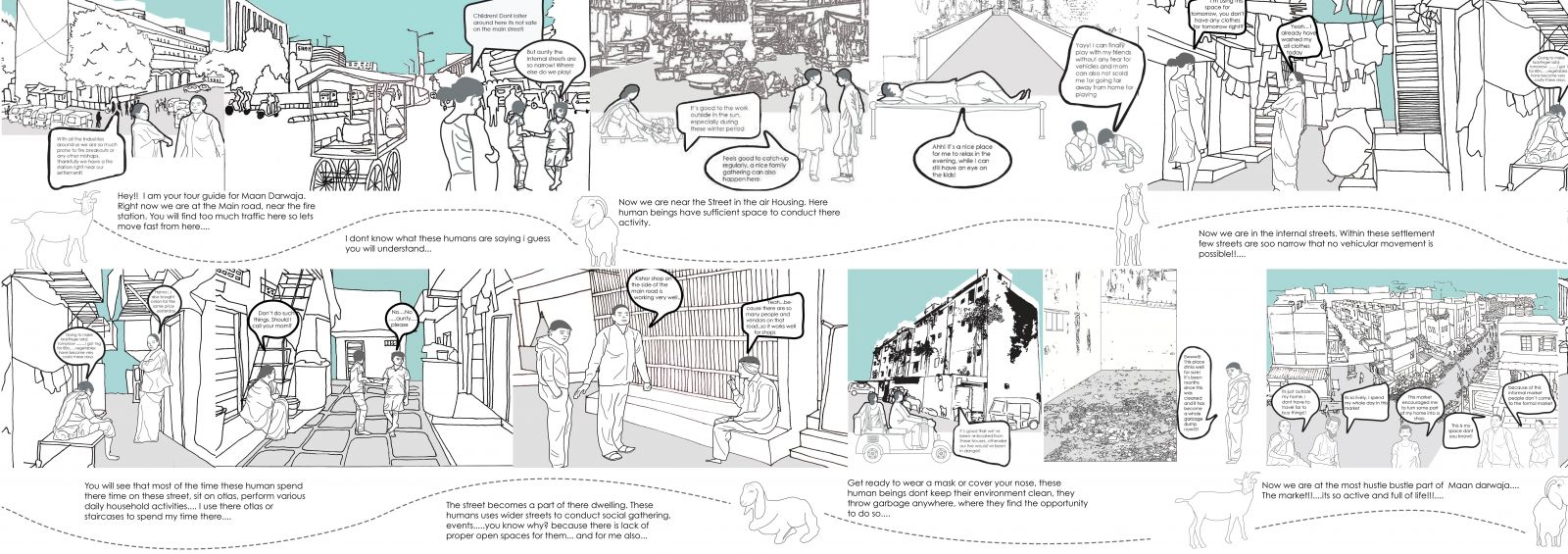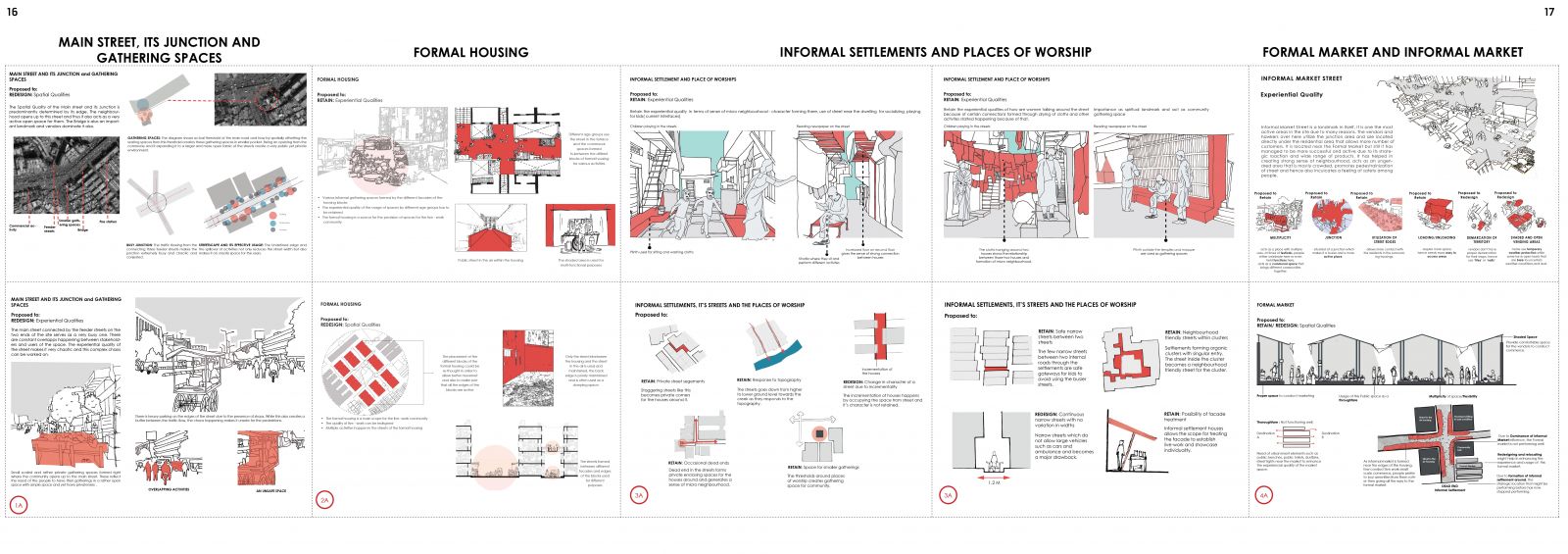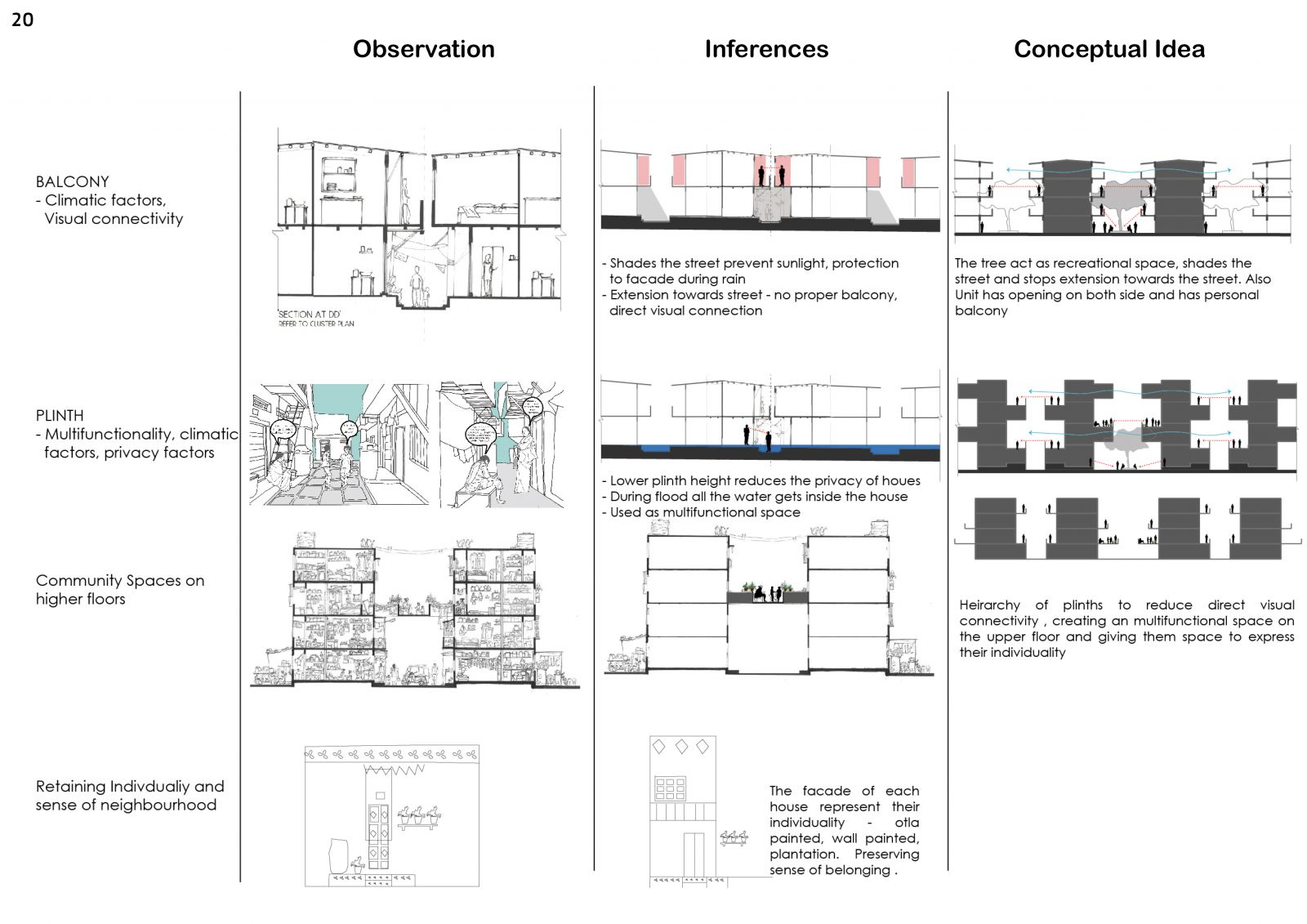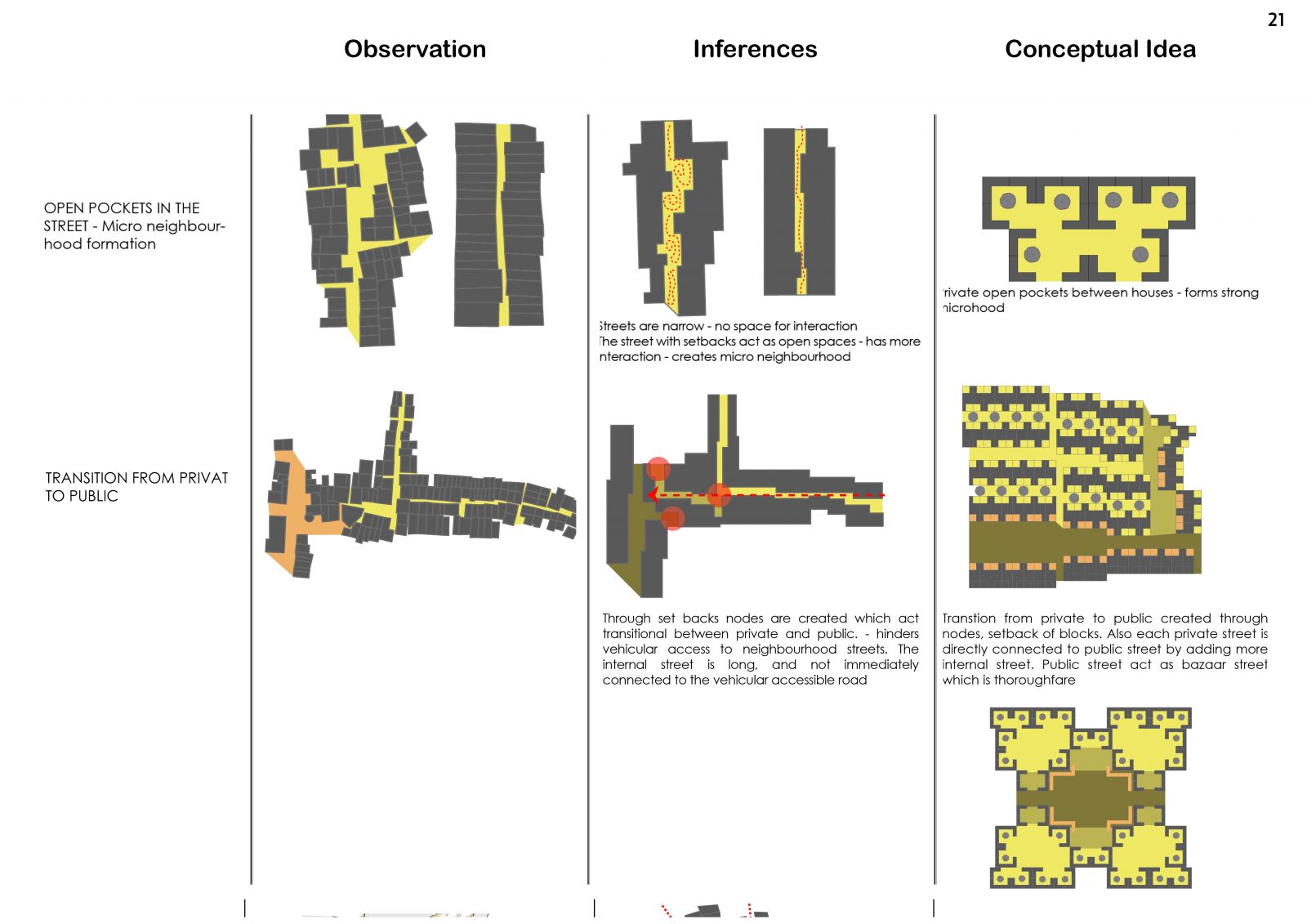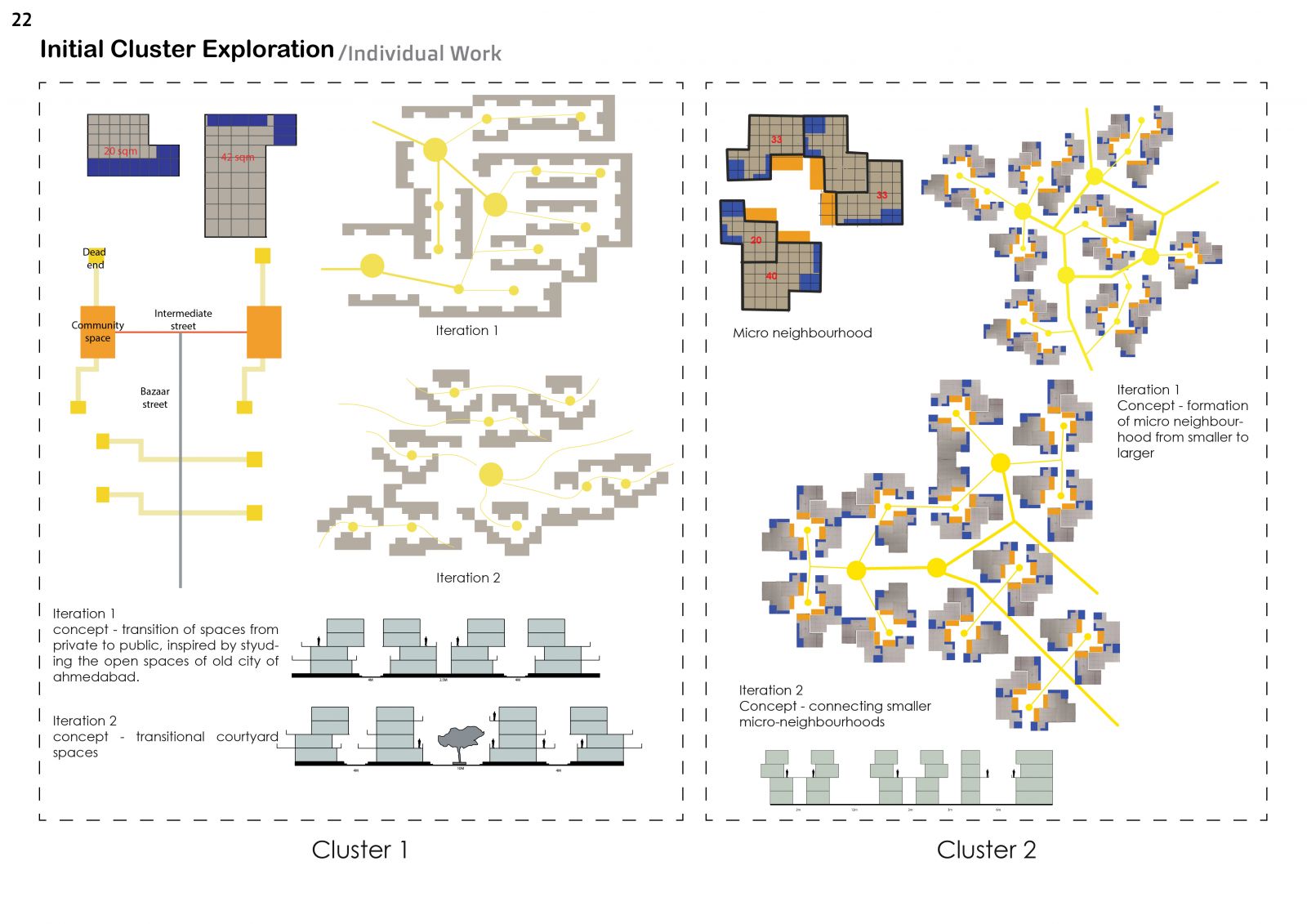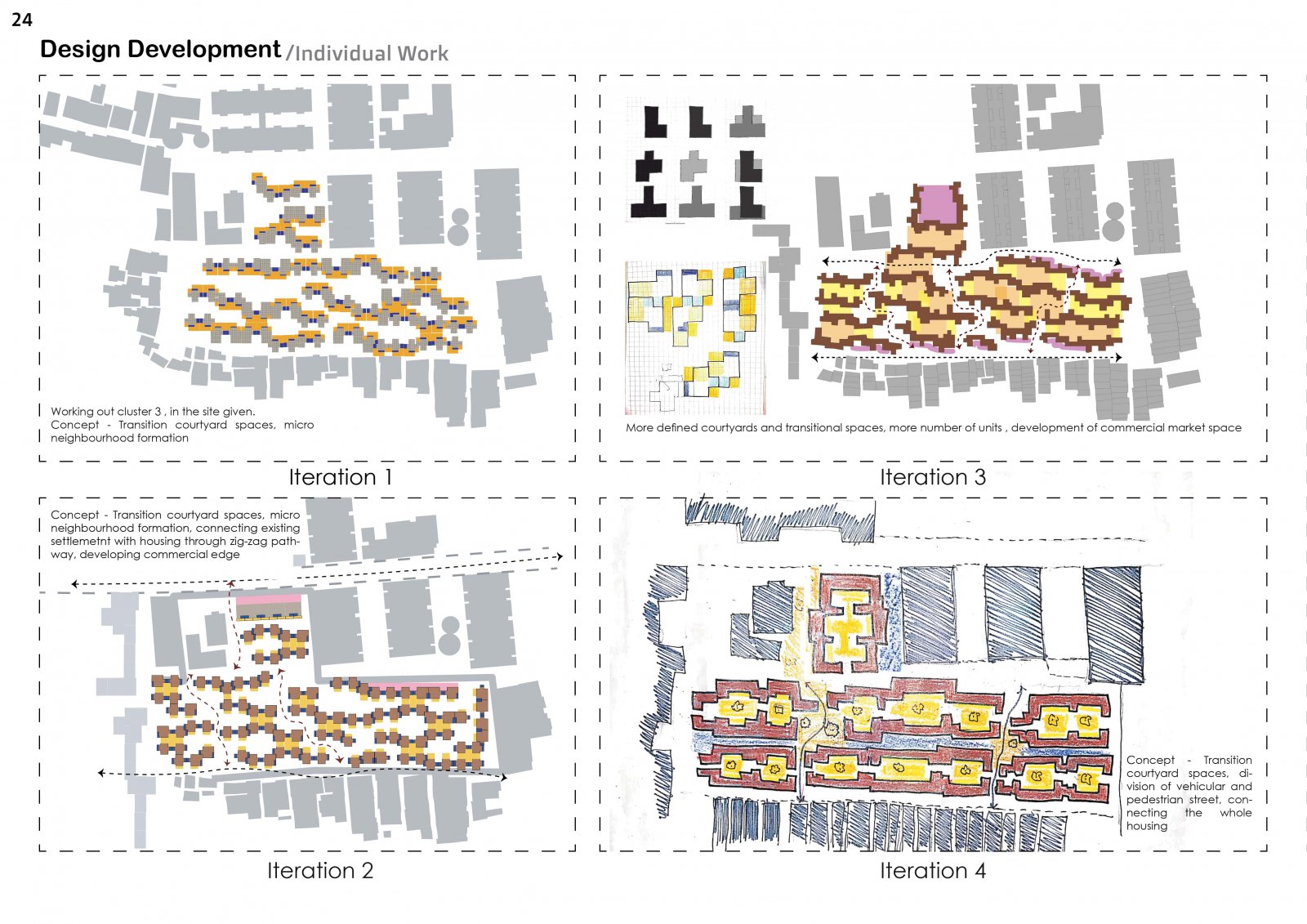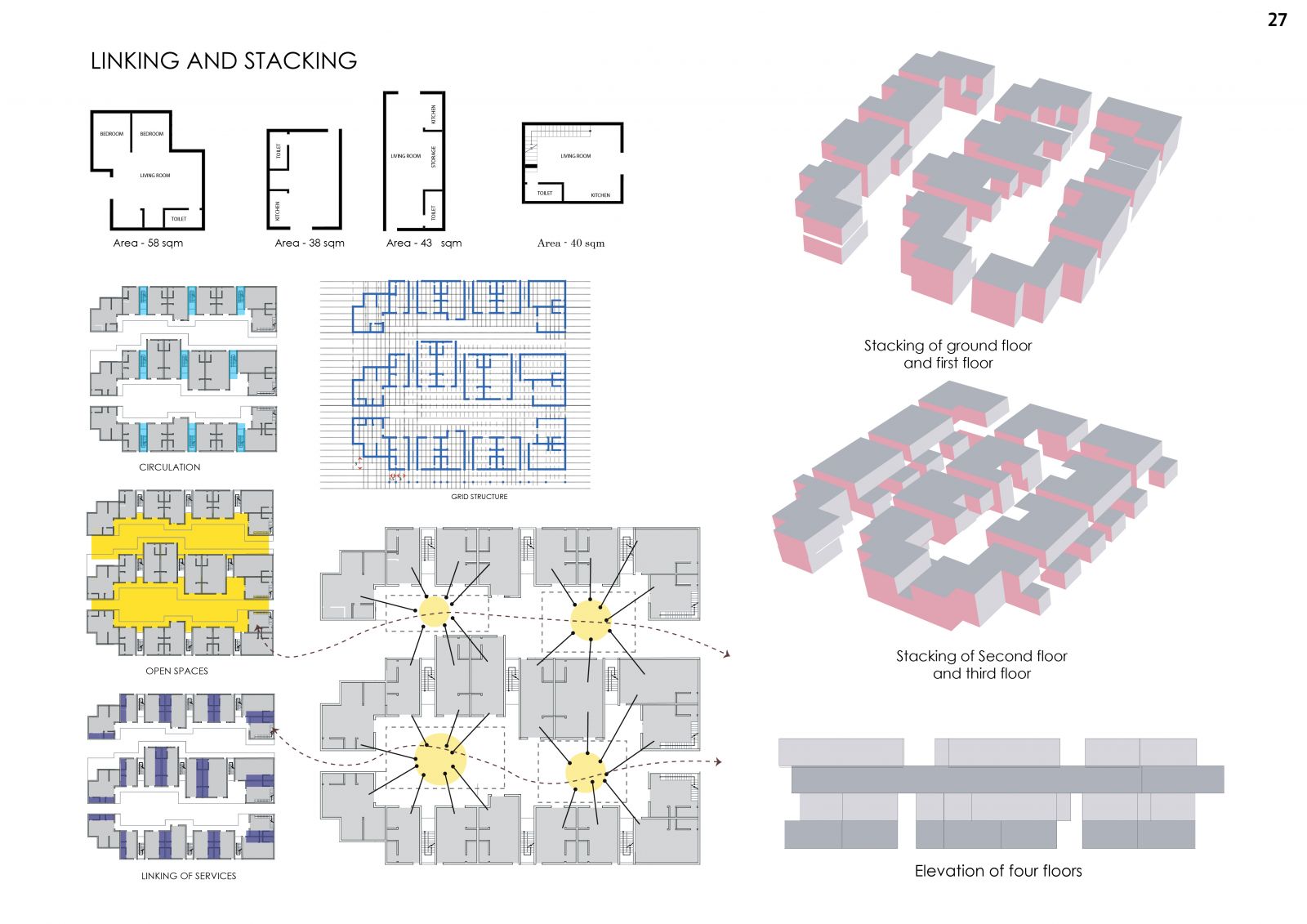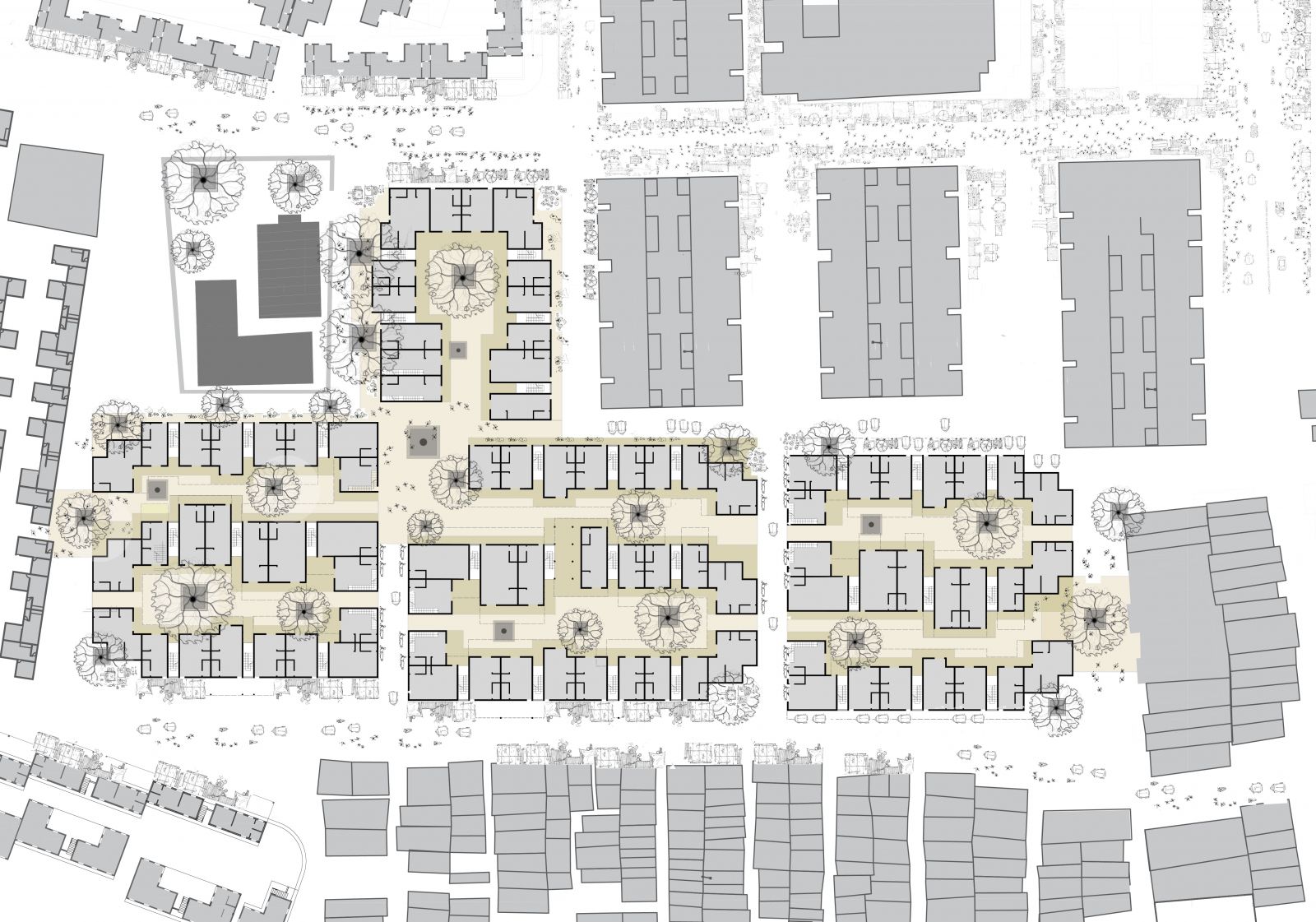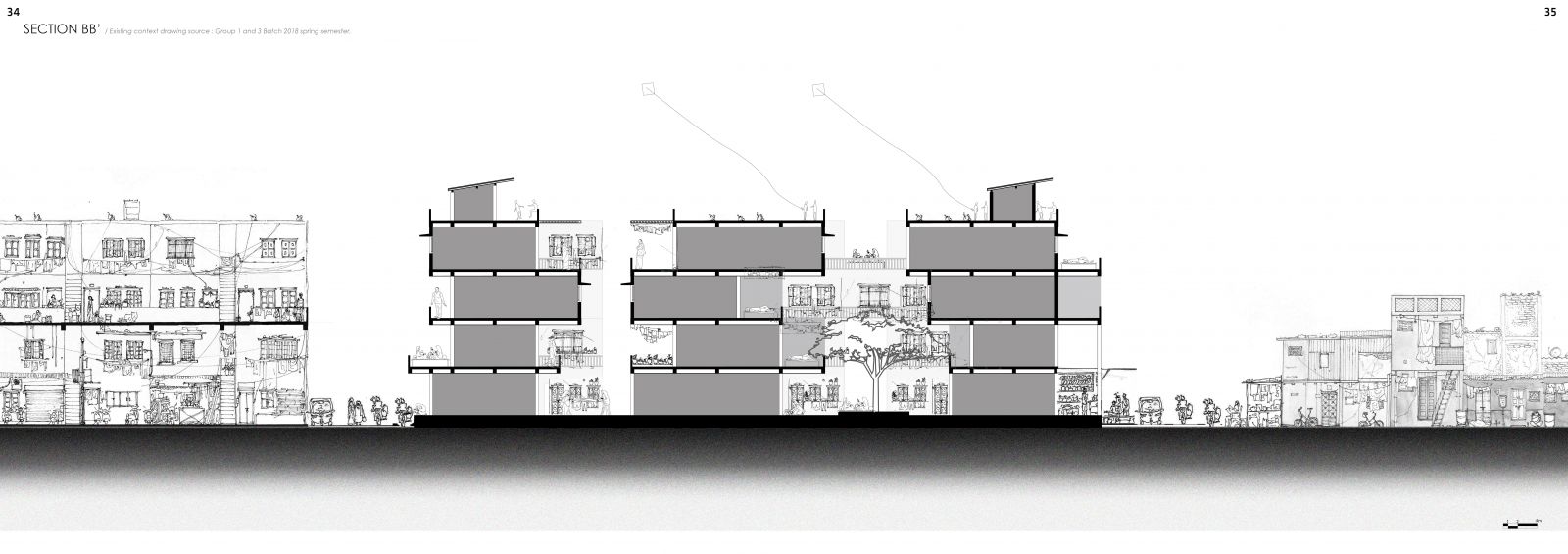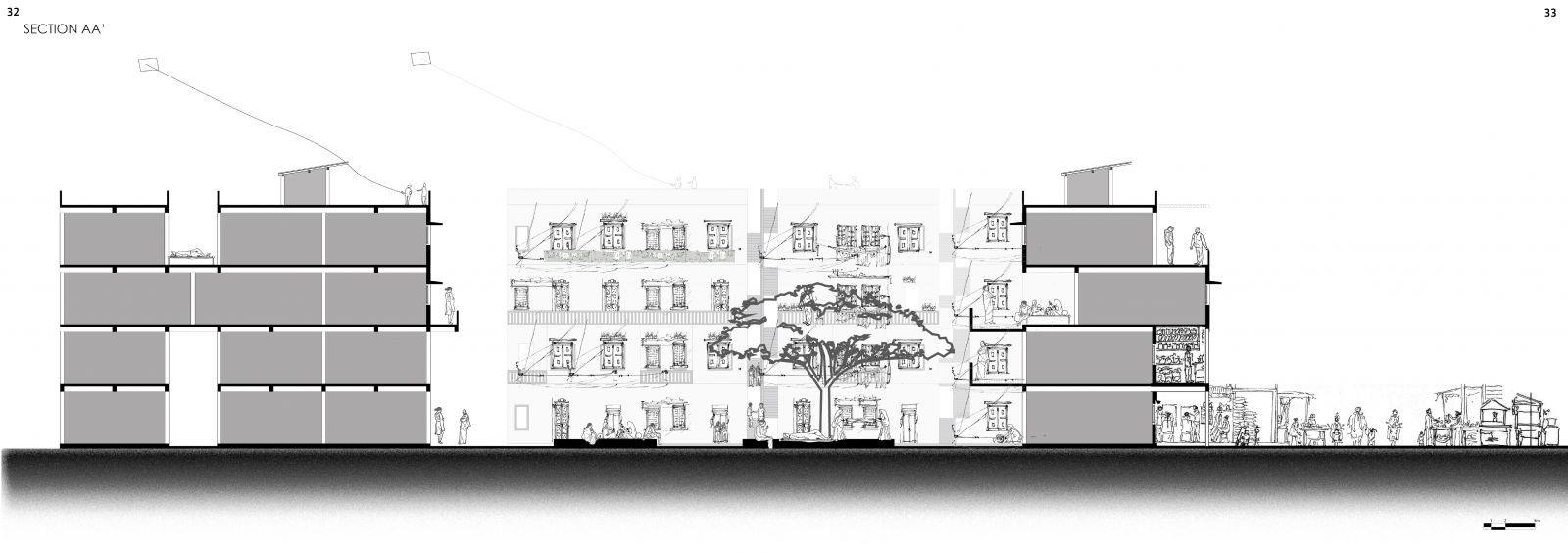Your browser is out-of-date!
For a richer surfing experience on our website, please update your browser. Update my browser now!
For a richer surfing experience on our website, please update your browser. Update my browser now!
The course introduces the concepts of migrant housing’ across space and time. The evolution of housing settlements through linking and stacking; their processes, determinants/ generations, and resulting patterns are to be explored in their respective contexts identifying the balance between order and complexity. The idea, here, is to create an adaptive habitat for migrant communities associated with the very dynamic and socially interactive live-work environment. Here, “adaptability” is visualized and represented as a real space which is accommodating people from diverse cultures and traditions over a period of time. The spaces, thus created, should characteristically provide the occupants with opportunities to alter such neighbourhoods in certain extended patterns. Eventually, this fluctuating habitat, over time, should be able to maintain a balance between generated orders & identified contextual complexities. The students have to learn to analyse and identify issues with linking and stacking of modular housing units. This helps them in exploring, planning and organizing various housing cluster ensembles in response to open spaces and adjacent urban context, thus, creating an ‘interface’ by balancing the underlying orders and complexities.
In this semester approach to the site understanding and analysis was through reference materials that were made available to the students. Students were familiarized with various unorganized migrant settlements in addition to the organized tenement blocks constructed by PDW department in 1965, located between the Maan Darwaja Fire Station and Canal in the south west corner of the Surat City. Link to portfolio
